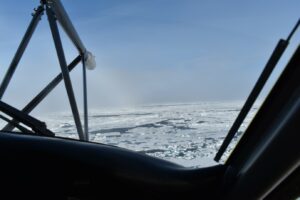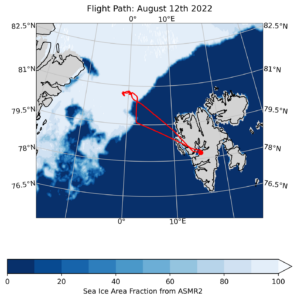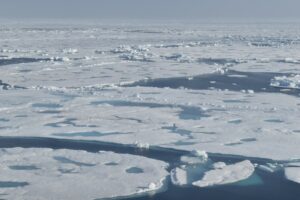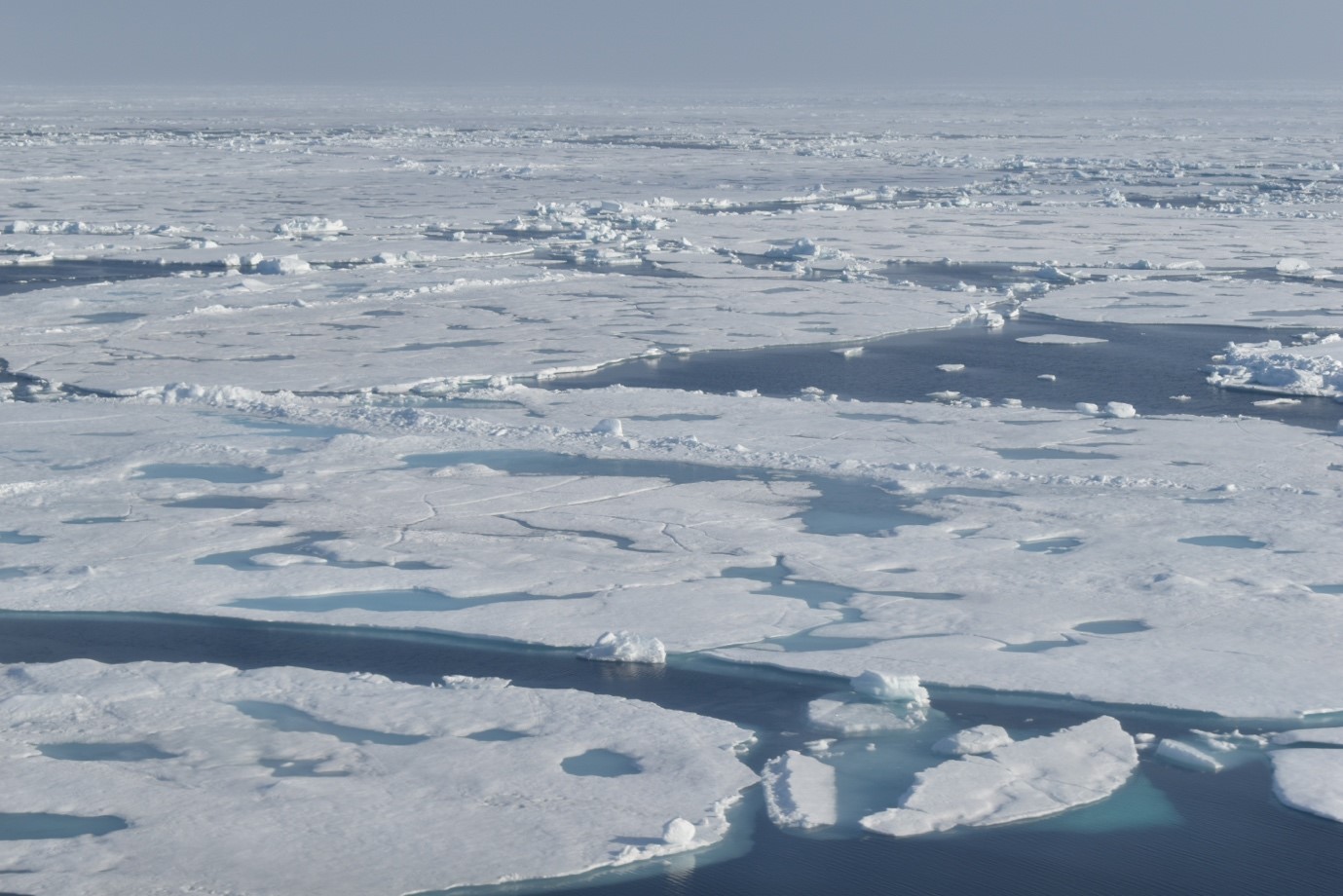Contribution by Miriam Bennett (UEA) – On August 12th, I was lucky enough to be given the opportunity to sit in the cockpit of the BAS Twin Otter aircraft during an exciting science flight in the Arctic. As a PhD student studying the complex interactions between Arctic atmospheric processes, sea ice variability and oceanographic phenomena, it was very exciting to have the chance to observe this uniquely beautiful environment in person. The views from the front of the plane were fantastic and it was definitely a very fun alternative to my usual workday in the library on a computer!

The aim was to fly northwest from our base in Longyearbyen, Svalbard, and descend to a low-level once over the sea ice, completing short transects heading first to the west and then back towards the east before returning home. Flying close to the surface is necessary to accurately measure the exchanges of heat and moisture between the ocean, sea ice and atmosphere. These exchanges, known as turbulent fluxes, have important implications for the development of local weather systems, such as cyclones, and are poorly sampled in this remote region. With the climate here changing faster than anywhere else on Earth it is important to improve our understanding of the physical systems driving the variability of this vulnerable landscape. We were also mapping out the structure of the boundary layer (the layer of the atmosphere in contact with the surface of the Earth) during strong winds, which has never before been done here during Arctic summertime.

Although there were some patches of cloud that prevented us from flying in straight low-level transects over the sea ice as we had planned, we had several attempts and were lucky enough to get some good pictures and hopefully some good data too. We recorded a wind maximum of approximately 16 m/s at an elevation of around 1000 ft over the sea ice which was associated with a Cold Air Outbreak we had seen in the forecasts. In addition to being very interesting to us scientists, observations like this can tell us about the dynamics of Arctic storms and indicate how they impact (and are impacted by) sea ice at the surface. Measurements in these remote areas can also help us to assess how well computer models are representing atmospheric processes used in local weather forecasting and longer-term climate prediction. With a rising number of people using the Arctic region more regularly, this is becoming increasingly important.

Although the flight did not go exactly to plan due to unexpected areas of poor visibility, we sampled some interesting features and recorded some useful measurements for meeting our primary objective of understanding the link between Arctic summertime cyclones and sea ice. It was an amazing opportunity for me and one that I will always remember. Flying over the bright white and deep blue colours of the sea ice was a spectacular experience. I am very much looking forward to processing the data we collected, and I cannot wait for my next flight in the Twin Otter!

